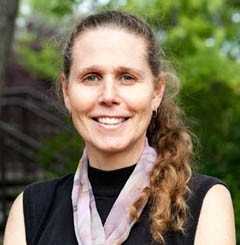U of M team brings local aspect to international research network
Dr Michelle Porter's team working to make communities safer and healther for older adults
A research team led by Faculty of Kinesiology and Recreation Management professor Dr Michelle Porter has been awarded a research grant to help communities become healthier and more age-friendly.

Dr Michelle Porter
Collaborating with a global network of researchers in an on-going study based out of Stanford University’s School of Medicine, Porter’s team (consisting U of M co-investigstors Ruth Barclay, Verena Menec, Richard Milgrom, Jacquie Ripat, Kate Sibley, Gina Sylvestre (University of Winnipeg), and Sandra Weber) is striving to make communities more user-friendly, accessible, and healthier for older adults.
Porter’s team is the only Canadian outfit part of this international cluster.
The program revolves around citizen scientists (mostly consisting of older adults) tasked with using a mobile app to take photos and make audio commentary about barriers and facilitators to healthful living in their communities. Built-environmental examples include walkability (sidewalk quality, crosswalks), access to healthful food, park upkeep, and housing quality. There are also social aspects such as neighborhood cohesion and healthy community activities.
Porter, who is also the director of the U of M’s Centre on Aging, says she’s excited for the unique aspect her team’s research will bring to the rest of network.
“We are going to endeavour to do all of this in the winter. Circumstances in communities may be completely different in the winter from what they are in the summer,” adds Porter.
“We’re well-placed to explore these issues in harsh winter conditions.”
The citizen scientists will meet with Porter and her research team to analyze the data and work with community stakeholders about making improvements to issues surrounding barriers.
“Ultimately the citizen scientists, the people living in these communities, are really the driving force in trying to enact change in their own communities.”
The grant comes from the University Collaborative Research Program and is worth almost $25,000 over two years. The team is aiming to commence the project later this year.






